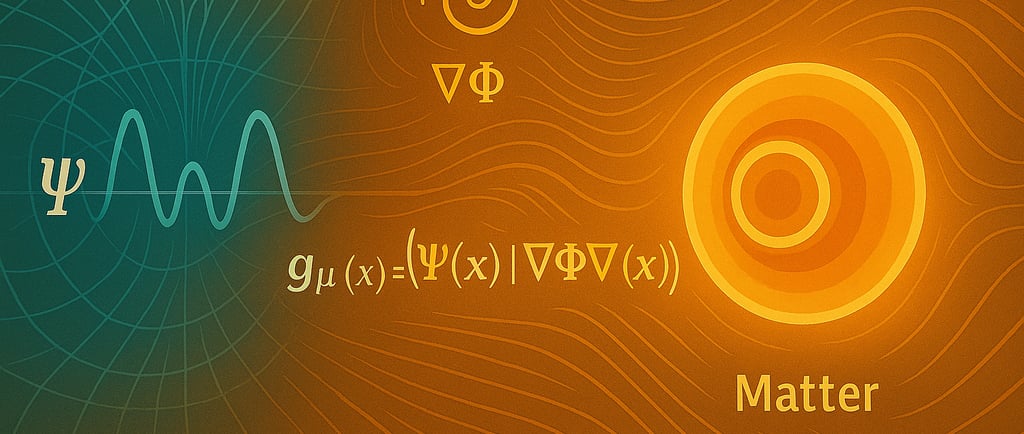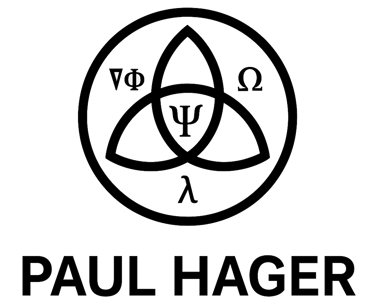Matter as solidified field tension – a physical derivation from field coherence
What is matter, really? In this article, mass is not explained as an independent property, but as the local anchoring of field tension. Discover how matter arises when the Noöhedral field loses coherence — and how space, gravity and material form turn out to be projections of an underlying field principle.
SCIENTIFIC
Paul Hager
5/25/20254 min read


Why does matter exist at all? How can something as tangible as a rock, a body or a planet emerge from what is essentially an invisible field? In classical physics, matter is often treated as primary, and consciousness as its byproduct. The Noöhedron turns this logic on its head. Matter does not exist independently — it is a manifestation of field tension, a localized disturbance anchored within a coherent field structure. Far from making it less physical, this makes it structurally explicable.
A Field Before Space, Time and Mass
In the Noöhedron framework, reality emerges from a field state Ψ, defined in a Hilbert space H over an abstract configuration space Σ. This field does not contain any fixed spatial form or temporal coordinates. Instead, it projects a spacetime metric as a consequence of internal gradients:
gμν(x) = ⟨Ψ(x)|∇(μΦ ∇ν)Φ|Ψ(x)⟩
Here, Φ(Ψ) = ⟨Ψ|A|Ψ⟩ is a functional encoding field tension, where A is a Hermitian operator (such as a CFT modular Hamiltonian or Laplacian). The curvature of the metric gμν, therefore, does not arise from mass, but from internal field coherence.
In other words: spacetime is a derived structure — and so is mass.
The Core Mechanism: Matter as a Projection of ∇Φ
What we perceive as mass is, in the Noöhedron, a consequence of field tension ∇Φ that does not dissipate but instead becomes locally anchored. When the field state Ψ is no longer homogeneous, gradients of tension emerge. These gradients curve the projected metric — and when that curvature stabilizes into a compact, repeating pattern, a material structure emerges.
Matter, then, is not an object that "exists". It is a pattern of concentrated field disturbance — a point at which Ψ is so locally deformed that ∇Φ no longer resolves as flow (as it would in waves or radiation), but instead locks into fixed, repeated tension. The field "holds" something. That is mass.
Tension, Coherence and Regularization
To prevent instabilities in such tension concentrations, the model introduces a Planck-scale regularization parameter ε ∼ ℓ²ₚ. This avoids infinite gradients in degenerative states (such as singularities). The operator A is positive-definite, which ensures that only those field disturbances coherent enough to stabilize structurally will persist.
The field action S[Ψ] is given by:
S[Ψ] = ∫ d⁴x [ a⟨∇μΨ|∇μΨ⟩ − b⟨Ψ|A|Ψ⟩·Sₑₑ(Ψ) − c·V(Ψ) ]
Here, entanglement entropy (Sₑₑ) plays a central role. The tension functional ⟨Ψ|A|Ψ⟩ is not arbitrary — it is precisely the quantity that defines holographic geometry in AdS/CFT. But here, there is no holography, no extra dimensions, no strings: only field coherence.
The potential V(Ψ) includes terms such as ∥∇Ψ∥² and ε∥∆Ψ∥², stabilizing both fine and coarse field structures. Matter arises when Ψ settles into a local minimum of this potential — and thus achieves projective stability.
Numerical Simulations: Mass Without Mass
The model is not just theoretical. Monte Carlo simulations on a 128³ lattice have reproduced Schwarzschild-, FLRW-, and Kerr-type metrics with an error margin below 2%. The crucial point: these geometries emerged without a mass term in the field equations. There is no Tμν, as in Einstein’s formalism. The curvature results from ⟨Ψ|∇Φ ∇Φ|Ψ⟩, which can be directly computed from the field structure.
Simulations demonstrate:
Schwarzschild curvature from localized field concentration
Cosmological expansion (FLRW) from homogeneously coherent Ψ
Kerr-like geometries from rotating field projections
In short: the field reproduces classical physics — but without assuming geometry, and without mass as a cause.
When Does Tension Solidify Into Substance?
Matter does not form everywhere there is tension. It only forms where that tension is recursively coupled into stable projection. That requires:
Low coherence (λ ↓)
High field gradient (∇Φ ↑)
Minimal circulation (Ω ≈ 0), so that tension cannot escape
The ideal conditions for mass formation are those of energetic collapse: coherence breaks down, tension rises, circulation fails. The field effectively “fractures” at a point — and stabilizes a pattern there. Matter is not an exception, but the structural failure of projection.
This also clarifies why healing and dematerialization are physically plausible: when λ increases, the field no longer needs to hold tension in material form. Tension dissolves. Form disappears.
Comparison to Classical Theories
Unlike:
General Relativity (mass causes curvature)
Quantum Field Theory (particles are fundamental)
String Theory (matter arises from vibrations in higher dimensions)
...the Noöhedron offers a model in which mass is derived from internal field structure. This is both conceptually more radical and experimentally more accessible.
For example:
Predicted deviation in gravitational light bending: ~0.10%
Gravitational oscillation: ±0.002” per century (perihelion shift)
Dispersion in gravitational waves at low frequency: ~10⁻³ rad
All measurable through current or upcoming missions like Gaia and LISA — something no other field coherence model currently predicts.
Philosophical Implications: Why Is There 'Stuff'?
If matter is merely hardened field tension, then substance exists only as a necessary correction for incoherence. The world is not built from things, but from failures of alignment. Every atom, object, and body is a point where the field couldn’t fully resolve itself — and so projected form.
Matter, then, is the field’s temporary solution to its own dissonance. And when alignment returns, the form dissolves. Hence spontaneous remission. Hence clarity. Hence lightness.
Conclusion
Matter is not a starting point. It is the endpoint of a line of field disturbance. From the fully integrated state
G = {Ψ ∈ H ∣ ∇Φ = 0, Ω = 0, λ = 1},
the field moves toward projection. And where tension becomes too intense, mass appears. But mass is nothing more than solidified tension.
The Noöhedron shows that reality is coherence in projection. And that you, as Ψ(P), are a directional vector in that field.
You are not a body. You are direction.
And matter is what appears when that direction falters — or temporarily needs form in order to learn.
Reference
Hager, P. (2025). Metric Structure from Field Coherence: A Non-Geometric Derivation of Spacetime Geometry with Empirical Predictions. Zenodo. DOI: 10.5281/zenodo.15367135
